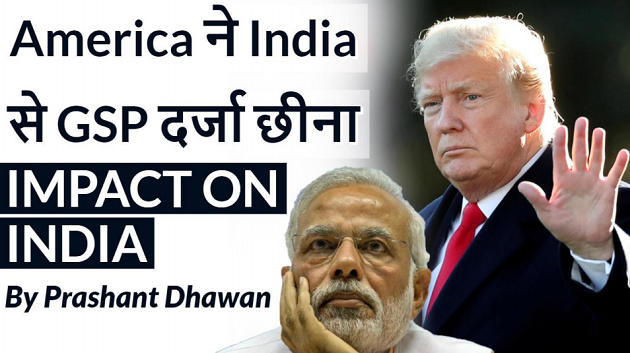Table of Contents



BASICS
- Generalized System of Preferences The GSP, the largest and oldest US trade preference programme, allows duty-free entry for over 3,000 products from designated beneficiary countries. It was instituted on January 1, 1976, and authorised under the US Trade Act of 1974. India has been the biggest beneficiary of the GSP regime and accounted for over a quarter of the goods that got duty-free access into the US in 2017. `
GSP OTHER EXAMPLES

- European Union Provides GSP treatment to Pakistan
GENERALIZED SYSTEM OF PREFERENCES
- Exports to the US from India under GSP — at $5.58 billion — were over 12% of India’s total goods exports of $45.2 billion to the US that year. The US goods trade deficit with India was $22.9 billion in 2017. (38,000 crore Indian rupees – Around 5.5 Billion dollars)
POSSIBLE IMPACT
- India’s Department of Commerce feels the impact is “minimal”, given that Indian exporters were only receiving duty-free benefits of $190 million on the country’s overall GSP-related trade of $5.6 billion.
FUTURE
- Trade between India and the US could jump to USD 500 billion by 2023-24 from about USD 142 billion at present, the Indo-American Chamber of Commerce (IACC) said
- “Current Indo-US bilateral trade is at USD 142.1 billion and we hope this can jump to USD 500 billion (by 2023- 24). There are short-term issues concerning e-commerce, Generalised System of Preferences (GSP) and medical equipment,” IACC president























 WhatsApp
WhatsApp